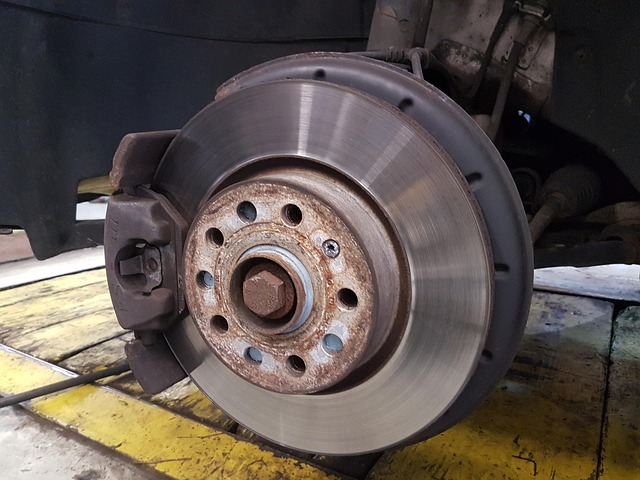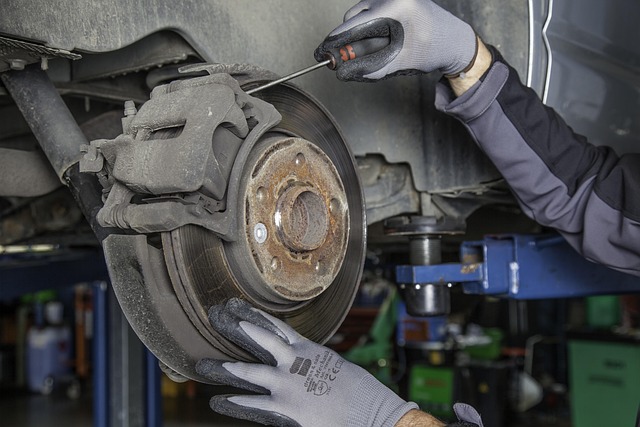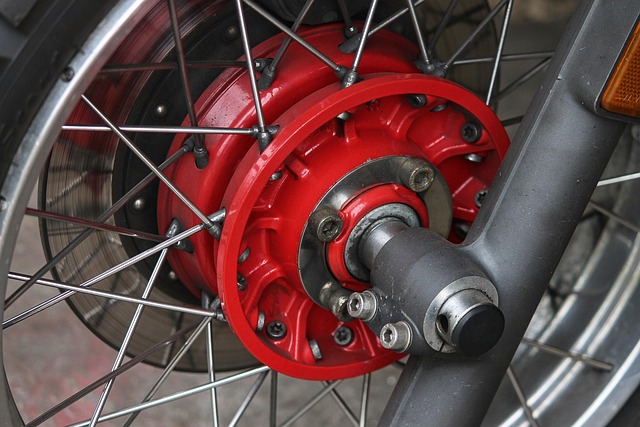Brake systems are vital for car safety, with disc and drum brakes offering distinct advantages. When replacing brakes, consider vehicle type, current condition, and quality parts for safety. Select brake replacements like ceramic pads or carbon-fiber rotors enhance performance, though they're pricier. Proper installation, maintenance, and alignment ensure optimal control, stability, and reduced noise. Regular checks catch issues early, enhancing safety and driving experience.
Staying in control on the road is paramount for safety. Understanding your vehicle’s brake system and its wear factors is crucial. When it comes to selecting brake replacements, there are various options with distinct advantages and disadvantages. This guide delves into everything you need to know, from understanding brake systems and their common wear points, to factors influencing your choice, different types of replacements, and finally, installation tips for optimal braking performance.
- Understanding Brake Systems and Their Wear
- Factors to Consider When Selecting Brake Replacements
- Types of Brake Replacements: Advantages and Disadvantages
- Installation Tips for Optimal Braking Performance
Understanding Brake Systems and Their Wear

Brake systems are a car’s primary safety feature, providing essential control over speed and stopping distance. Understanding how they work is crucial when considering select brake replacements. The most common types include disc brakes and drum brakes, each with unique advantages and wear patterns. Disc brakes, for instance, offer superior cooling capabilities due to the airflow across their rotors, making them less prone to warping. This makes them a popular choice for modern vehicles, especially in performance-oriented models.
Over time, brakes experience natural wear as they constantly absorb and dissipate kinetic energy during braking. Regular maintenance checks can help identify signs of wear early on, such as increased brake pedal travel or unusual noises. For instance, air brake solutions often address issues related to sensor malfunction that can compromise braking performance. Additionally, considering a drum brake conversion might be beneficial for vehicles with excessive wear on disc brakes, offering an affordable and effective alternative.
Factors to Consider When Selecting Brake Replacements

When selecting brake replacements, several factors come into play to ensure better control and safety while driving. Firstly, consider the type of vehicle you own. Different cars have unique braking systems, so understanding your vehicle’s specific requirements is key. For instance, sports cars might need high-performance brakes for swift responses, whereas heavy-duty trucks will require robust brake components that can handle increased weight and cargo.
Secondly, evaluate the condition of your current brakes. A simple checkup with a professional mechanic can reveal whether you need a complete hydraulic brake overhaul or just a few component replacements, such as brake rotor replacement. Regular maintenance and timely repairs are crucial to prevent emergency brake service situations. Additionally, consider the brand and quality of the replacement parts to ensure they align with your vehicle’s performance standards and offer long-lasting durability.
Types of Brake Replacements: Advantages and Disadvantages

When considering new brakes for better control, it’s essential to understand the various select brake replacements available. One popular option is the ceramic brake pad, known for its superior heat resistance and reduced brake noise diagnosis compared to traditional metal pads. Ceramic pads offer improved performance in both wet and dry conditions, making them a top choice for those prioritizing safety and longevity. However, they can be slightly more expensive than organic pads.
Another common choice is the carbon-fiber brake rotor, which provides excellent heat dissipation and offers a smoother braking experience. These rotors are particularly favored by motorcycle enthusiasts for their ability to minimize warping and maintain consistent performance during intense riding sessions. While they offer superior control and reduced fade, carbon-fiber rotors are pricier and may require more meticulous maintenance than conventional options. Choosing the best brake replacements depends on individual needs, budget, and the level of performance desired.
Installation Tips for Optimal Braking Performance

When it comes to installing new brakes for optimal control and performance, a systematic approach is key. Begin by evaluating your vehicle’s specific braking needs. Different models and makes have unique brake architectures, so selecting the right brake replacements is crucial. Look for high-quality components that match or exceed the original equipment standards. For example, choose pads with well-designed wear indicators to ensure consistent performance over time.
During installation, pay close attention to details such as alignment and clearance. Ensure your local brake shops have the necessary tools and expertise to handle the job accurately. Properly secured skid plate brake mounts are also essential for maintaining stability and reducing noise during braking maneuvers. Regular maintenance checks after installation will help identify any issues early on, ensuring a safe and smooth driving experience.
Upgrading your brakes with the right replacements can significantly enhance control and safety on the road. When selecting Brake Replacements, consider factors like vehicle type, driving style, and budget. Understanding the advantages and disadvantages of different types ensures an informed decision. Following optimal installation tips will further improve braking performance, making your vehicle a testament to superior control in today’s digital era. Remember that, in terms of safety, choosing the right brake replacements is crucial for navigating bustling metropolises with confidence.
